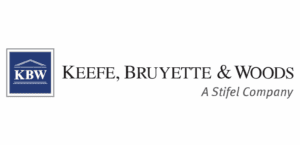AFCA demonstrates how to fight fraudulent claims

Fraud cases: the importance of narrative and evidence
One focus of the presentation by Chris Liamos (pictured above) was how cases are won and lost around narrative and evidence fitting together and also making common sense.
“An example I like to use,” said AFCA’s senior ombudsman for general insurance, “Is if I was to say to someone that I can run 100 meters within 60 seconds, people will accept that on the face of it and it’s very unlikely you’re going to have any dispute about it.”
However, said Liamos, if he claimed he could run 100 metres in eight seconds, no-one would accept that, even if he provided video evidence and other supposedly scientific data.
“The reason is that it’s inherently implausible to accept that,” he said.
Another important piece of AFCA advice for insurers: whatever the insurer’s fraud allegation, claimants are considered innocent until proven guilty because in many cases they are.
“The courts have accepted that people are generally fundamentally honest and for someone to be fraudulent is quite a shift from the general character we would expect of people,” Liamos said.
However, the senior ombudsman said AFCA always starts its investigations of alleged fraud by looking at whether the insurer’s customer can establish their claim under the terms of their policy.
“So that normally will require for the complainant [the customer whose claim was rejected] to at least provide a version of events that’s credible and consistent with the other known information or established facts,” he said.
If that can be established, AFCA moves on to the fraud allegation coming from the insurance company.
Onus of proof is on the insurer
“It’s important to note that the onus of proof in that context is on the insurer and that’s not an easy burden to make,” Liamos said. “[Fraud is] a serious allegation, there’s no disputing about that, and so the evidence needs to be clear and cogent.”
He said the standard of proof hinges on “the balance of probabilities.”
“So if you’re submitting something that’s very plausible, inherently likely, no dispute about it, you’re not going to need much information in support,” Liamos said.
However, because the “general presumption” of the courts is that people are honest, he said insurers would need to submit information that can shift APRA from that generally held assumption.
“The type of information you would need to establish fraud is typically going to talk about character, credibility, motive, opportunity and expert evidence in support,” Liamos said.
Types of evidence that can support fraud allegations
Llamos brought up a slide listing the evidence that insurers would need to send APRA to help demonstrate their case: Interview transcripts, conversation notes, emergency services reports, expert and investigator reports, and phone and bank records.
“When we’re looking at fraud complaints, we often might look at certain points of the evidence but we don’t just leave it at that,” he said. “We still need to step back and look at all of the information and see where the narrative fits best.”
Liamos said all of the evidence is balanced together and looked at “as a whole.”
What is the motive behind the fraud?
Where the narrative doesn’t seem to fit the evidence, he said, it raises an issue.
“You [the insurer] may have little information about motive and whilst motive doesn’t have to be clearly established, there has to be something in place in order to get to fraud,” said Liamos. “The problem that sometimes comes up is that there is varied or no evidence, which makes it difficult to understand what’s driving the potential fraud.”
He said AFCA is more likely to accept a version of events that is “generally likely or plausible.”
“By that I mean someone who doesn’t continually change their version of events,” said Liamos. He said “common sense” principles are “kept in mind” when AFCA weighs evidence.
“Particularly the complainant’s [customer] evidence, which is usually the one right in the microscope,” Liamos said.
However, he said when an insurer demonstrates that some of the evidence from their customer is false, that doesn’t mean there is a case of fraud.
“The courts have made it clear that a false statement is not of itself enough,” said Liamos. “It has to be knowingly made in connection with the claim for the purpose of inducing an insurer to admit a claim.”
For example, he said, someone who has made an honest claim could lie about their whereabouts to cover the fact that, at the time, they were cheating on their partner.
“That doesn’t make the claim fraud,” said Liamos. “It does make them [customers] provide false statements.” He said this can make it difficult for an insurer to prove fraud.
“You have to prove the intent on top of the false statement, which makes the fraud allegation fairly difficult and why the evidence has to be pretty strong in support,” Liamos said.
Opportunistic and premeditated fraud
According to the Insurance Council of Australia, insurance fraud “covers a range of issues and can be deceiving to some people.”
The ICA said the term includes exaggeration of legitimate claims, intentional misrepresentation of facts and manipulation of the claims process to gain a financial advantage where there has been no actual loss.
“The most common form of insurance fraud is the exaggeration of personal claims – this is referred to as ‘opportunistic fraud,’” says the ICA website. The website article says premeditated fraud is often committed by professional fraudsters and criminal gangs.
The ICA says its Insurance Fraud Bureau of Australia, or IFBA, is helping “combat insurance fraud in all of its forms” and works with police and other bodies to prosecute cases.
Is insurance fraud an issue for your insurance business? Please tell us below.




